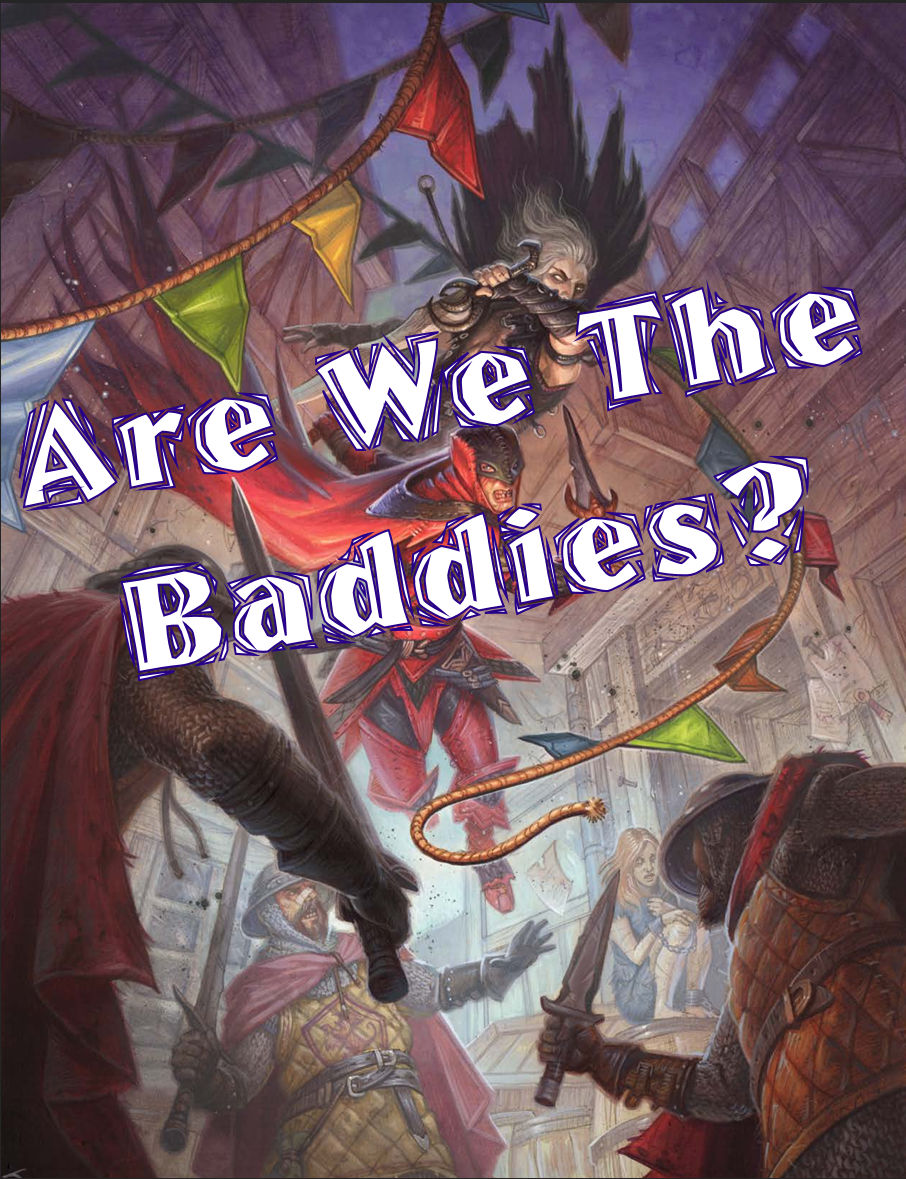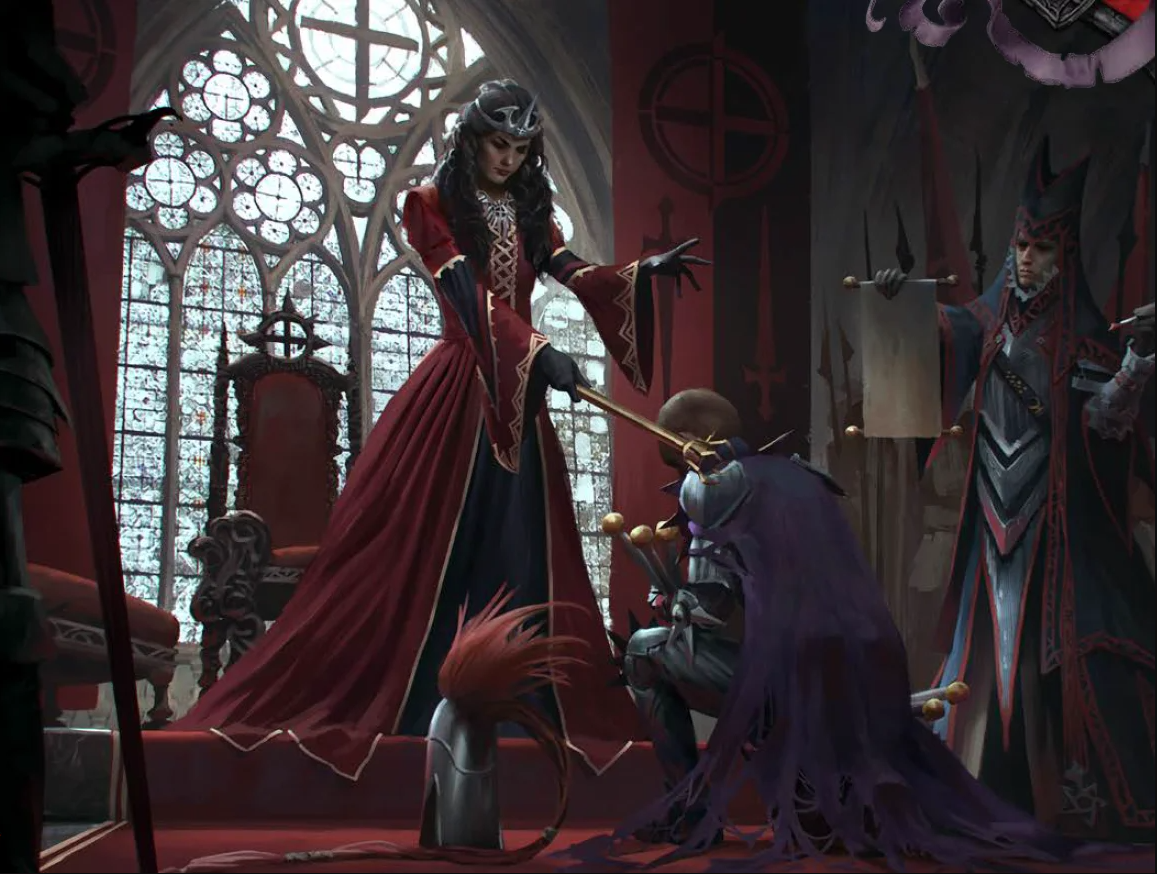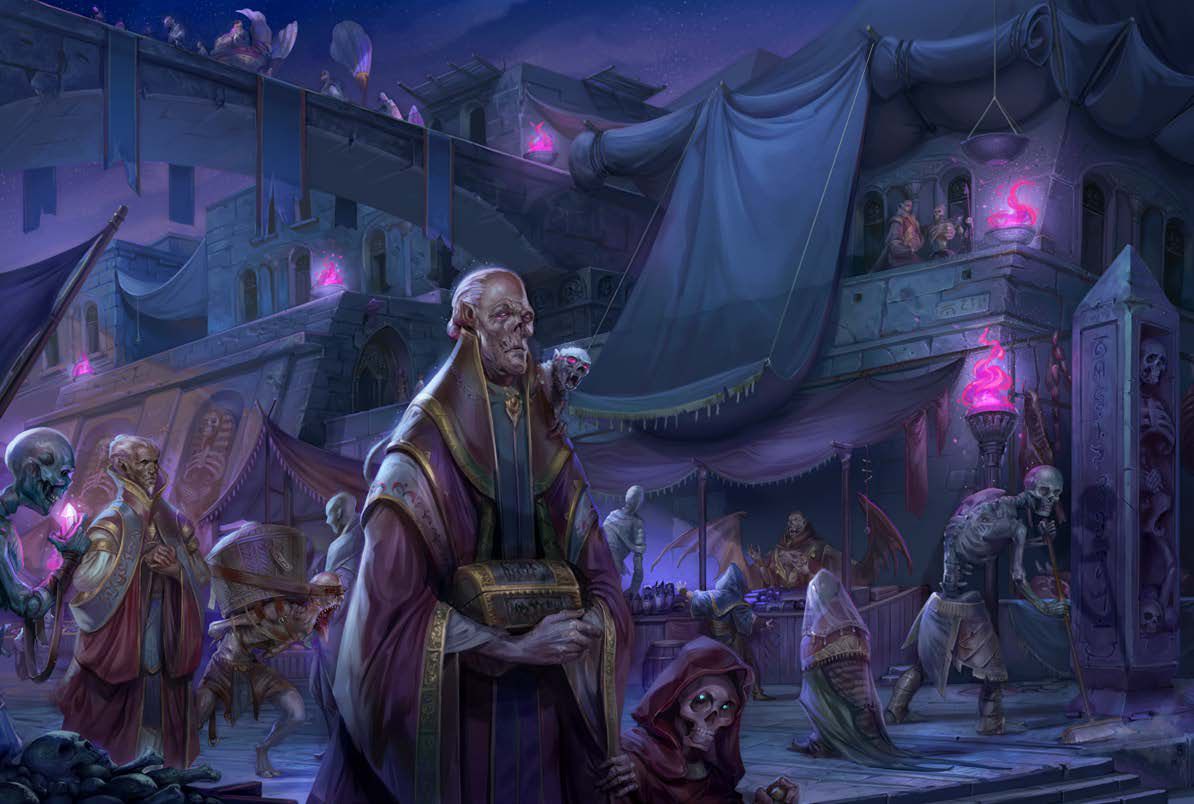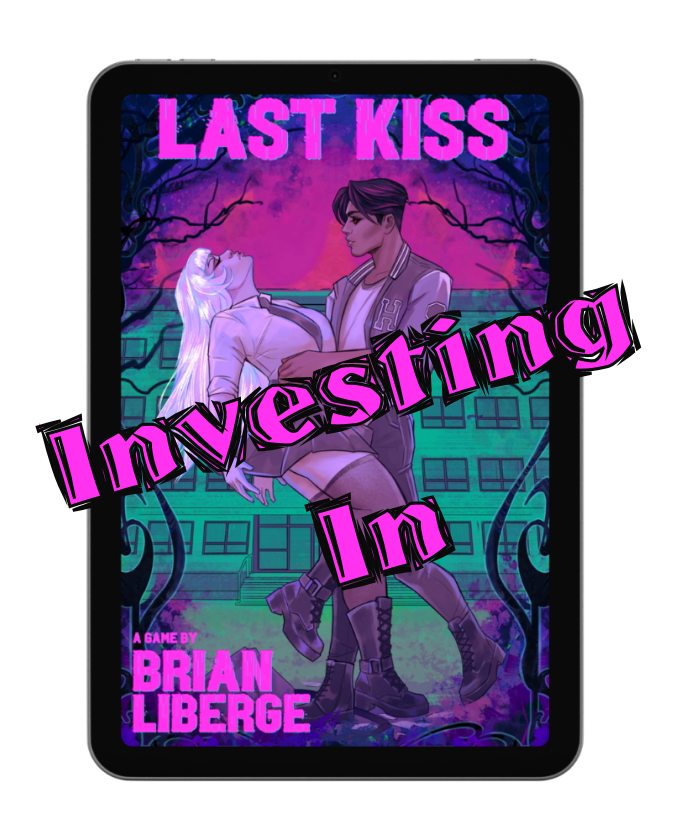“Knowing your own darkness is the best method for dealing with the darknesses of other people.” – Carl Jung
Have you ever played an evil character? How did the other characters treat you? Heck, how did the other players react upon finding out? What was the reason for the character’s morality? What were your motivations? Did your character grow more evil, become reviled or perhaps they had a change of heart? Maybe you played a whole campaign of evil or “not good” characters like Hell’s Vengeance or Blood Lords? Did the group trust one another? Did it fall apart? Whether it was a group of nasties or you alone in your vileness was it ever asked: are we baddies?
While the above meme is in reference to Avatar: the Last Airbender, the original “Are We the Baddies?” meme came from the show That Mitchell and Webb Look, which I only learned about as I prepped this article. The premiere episode of this British sketch comedy was over 15 years ago and in that first episode two Nazis reflect on their helmets, the perceptions of others, and one posits: Are We the Baddies? Oh yeah; they were and make no mistake that they still are. The pop culture masses quickly took that saying for those who reflect on their actions that they might have thought – or were told – were the right actions to take but now they’re not as certain. I’d advise always being mindful of your actions in real life and the same goes for gaming. While alignment is set to disappear with Remaster, we’ll get edicts and anathema. People might still play shifty character, ne’er-do-wells, and other tropes but evil sometimes finds its place. So as we head into spooky season and see the launch of Remaster in a couple months, I found myself reflecting on those baddie characters.
The Why
Let’s consider the purpose, the appeal, and how to make these characters work in your game. And why do so many people seem to become rabid fans for these characters? I couldn’t help but think of my favorite iconic: Seltyiel. Games with non-good, especially what we consider evil, characters tend toward the Mature. I quickly thought of the World of Darkness games that include the undead. Vampires often are depicted as dangerous, dark, foreboding but it’s not their fault some might say. A tortured, sad soul perhaps never knew any better growing up on the streets and turning to crime. Perhaps it’s the government and the rulers around them shaping a system that encourages lower moral standards as you might see from Hell’s Vengeance. Ultimately it comes down to the journey we want to see for the character and there’s no denying there’s an allure to danger. But it shouldn’t be evil, violence, hatred for sake of being such. It’s why these characters or games with these themes require buy in from your table, your group. Holding a Session 0 and using safety tools become only more important! The lines and veils can help make it clear what the group is comfortable with. Open discussion and trusting one another to have that discussion is a good thing. Don’t be a villain in the growth of safe gaming spaces.
The Eventually Good
Some choose those characters that start evil but grow beyond such. We might see Pathfinder characters with edicts and anathema counter to what we might view as good, moral, or ethical. Perhaps they support Cheliax. Maybe they view Sarenrae worshippers as fiery arsonists. What if they’re from Ancient Thassilon and some aspiring runic mage saved a family member? They’re likely supportive of them. But sometimes it’s a bit clearer to define. Maybe they’re willing to steal for what they want or even kill. Rarely are those characters members of happy families, perhaps with deceased parents and no siblings. Suddenly found family in the part starts to influence and change them. Environment plays a part in our development after all, and I would encourage anyone choosing to roleplay an aspect that we can find in society to do their research. Just like we should understand the cultural influences, maybe understand the religious, nationalist, socialist, or even traumatic upbringing some have had. I really appreciated that Krynn – the prime material plane in Dragonlance – had a Cataclysm because one church started to say no god was Good enough. Zealotry and hubris brought that church down.
And see, that’s another important facet to consider that Edicts and Anathema will help us represent. Even good can become evil or be seen as evil by others. I recommend deciding a few points that might make a non-good character take pause, reflect on what’s happening around them. That’s good character growth and a GM will reward such. Maybe it’s a child gets harmed. Maybe the sick are robbed. Robin Hood only stole from the rich, so he wasn’t evil, right? Well the child of a noble on a stage coach as the guards are attacked and their money stolen probably though the Hood was an evil person. Perspective matters and a point of character growth for an evil character can be gaining some perspective of their own. I’m actually playing a Monsterhearts character of this fashion named Callahan, even doing a bit of research to portray psychopathic tendencies like manipulation and exploitation of others. I’d chosen their love and appreciation for animals, but a hatred for humanity. They’re a dragon truthfully so they haven’t exactly appreciated the history of humanity’s hunt of dragonkind, let alone how humanity is handling the earth. Hard to disagree there, right? I’m interested to see how the mortals and other monsters continue to interact with that character.
The Not-So Bad
Maybe instead your character is already seen as a hero or at least willing to participate in the questing, adventuring, and other helpful activities heroes are often expected to do. The hero of one town or country may not necessarily be a hero to another country, especially if we look at history, but for sake of this section let’s consider the more common antihero trope. Some popular examples include Deadpool, Catwoman, Harley Quinn, Magneto, Lestat from the Vampire Chronicles, Damon from the Vampire Diaries, or even Wednesday Addams. An antihero is a protagonist or part of a supporting cast of protagonists. But they’re imperfect, typically selfish or cynical. They may rude, generally not courageous, and can be prone to violence, greed, and other typical amoral behaviors. I listed two vampires for a reason in reference to my earlier discussion above. They feed on blood, hurt people, but maybe they try to do the right thing generally especially if people they care about are in danger. The line toward “goodness” becomes when they start taking action even for strangers. Or perhaps they are willing to put their allies at risk for their own fame or infamy! They might not even care about their reputation because of a cause that’s more important to them.
Magneto suffered incredibly racist crimes, losing his parents due to Nazism. And then he grew to persecute an entire group of people because of what they’d done. He holds himself apart from humanity, but ultimately he saves mutants and even grows to be kinder in later years. I’ll admit Magneto has influenced that Monsterhearts character I mentioned. I might argue Deadpool is less antihero and more child of chaos, but I suppose it depends who’s writing him at the time. Catwoman and Harley Quinn are willing to steal, kill but for what they think is right. Over time DC Comics has shifted Harley’s story from what of mental illness to one of abuse at the hands of the Joker. Elements like mental illness and abuse may not be suitable for all games or players, so again use that Session 0. And also, remember, some sessions someone may want to X a topic because of a fresh event. Be open to that need if you want to explore a character journey that includes such topics and your group has trusted you to do so. Antiheros can be incredibly dramatic, powerful characters and truly some very popular names are listed amongst them. I encourage you to understand antiheroes by researching these common elements and fashioning out the history, the cultures, the growth that got them to this point already. Pathfinder1E had rules for antiheroes in that you didn’t get hero points but they got a free feat. Perhaps you could use such for Pathfinder2E as well!
The Ugly or Just Really Bad
What if your PC Is downright vile? I made a joke of the good, the bad, and the ugly for my section titles but it is true in classic folklore that many villains are ugly. They can be devastatingly beautiful too so let’s not focus on that. Appearance doesn’t mean you’re a good or bad person after all, though I suppose we could get into the philosophy of using your looks too… No, no another time. Hell’s Vengeance encouraged some rather evil behavior and specified non-good characters serving Cheliax. Blood Lords has you playing the undead, or at least those who sympathize and regularly work with the undead in that wonderful nation we know of as Geb. You’re not even allowed to use positive magic there without being arrested! I’ve yet to see a campaign with a truly evil character, not planning to aid in any heroics, unless it was a premise for the game. I ran a Dragonlance game of all Wizards of High Sorcery, so we had two Black-Robed Wizards of Nuitari. They were evil: manipulative, willing to kill, etc. But even they performed many heroic actions, saved numerous strangers… Of course, they were bound to magic first and foremost above all else as is the ways of the Wizards of High Sorcery. While I think choosing a concept and preparing a backstory is important for any character, it’s even more important for these purely evil folks. In order for them to have some depth you’ll need to know what they stand for, what their motivations truly are. I’ve great respect for the writing of the characters that are “truly vile” in Baldur’s Gate 3 as I’ve learned why they did what they did. I won’t spoil of course. There’s revenge though I’ll say the Punisher is an antihero, not a villainous main character. If you are making evil characters / an evil campaign, look to the new Edict and Anathema system for Pathfinder2E for inspiration even if you aren’t playing Pathfinder.
There’s the villains our GMs have to play too. How many adventure paths have I seen played where the players will never quite know the true motivations of most of the villains? Ultimately the lead, big bad becomes known for their nefarious actions. Sometimes for a reason, but sometimes that reason is just power or world domination. Not all stories are complex enough, not all games need to be, for the villains to have the depth of characters. They’re meant to be villains. But I’ll say, good characters that go bad? Those can make for some great narrative surprises for the players and some truly wonderful stories. The Fallen Angel? Hello Diablo. The broken Paladin? Whatever’s going to happen with Critical Role Campaign 3… Yet again, even if a Runelord or the Queen of Cheliax is evil there are bound to be many who don’t see them that way. Allegiances (like Edicts) matter here. What can get an NPC to change their mind? Possibly betrayal, or helping them with something at the root of their misery, or it might just be proving to them how what they are doing is actually Anathema to them.
If you’re planning spooky games this October, creating a not-so good character for a campaign, or planning a whole host of evil characters, then I hope you’ll invest in the reasoning of why, the depth of a developed character, and certainly the session 0 and safety tools to make sure it’s a good experience for you and your entire table. There are great stories to be told from despair and triumph, but don’t let yourself revel in the darkness. It is as Carl Jung’s quote tells us a way to see and better understand that darkness in others. Maybe we need to talk about therapy through gaming too…
Investing In:
I wasn’t quite sure what to name my article series when I first started but the idea of showcasing or discussing things that make me excited, that I find new and interesting, or maybe I’m otherwise passionate about seemed to fit with the idea of Investing In something like the Pathfinder 2E mechanic. To use some magic items you have to give that little bit of yourself, which helps make these things even better. I like the metaphor of the community growing and being strengthened in the same way!
I also want to hear what you’re Investing In! Leave me a comment below about what games, modules, systems, products, people, live streams, etc you enjoy! You can also hit me up on social media as silentinfinity. I want to hear what excites you and what you’re passionate about. There’s so much wonderful content, people, groups (I could go on) in this community of ours that the more we invest in and share, the better it becomes!
Sources
Banner – Antihero Handbook cover image, text added, Paizo, image by Chris Seaman
- Avatar Memes – Are we the baddies?, image by kkachi95, Creative Commons Attribution
- Signing of the Contract, Hell’s Vengeance path image, Paizo, image by Bryan Sola
- Magneto, image by tendercoal, Creative Commons Attribution
- Mechitar, Geb, Pathfinder Lost Omens: Impossible Lands, Paizo









